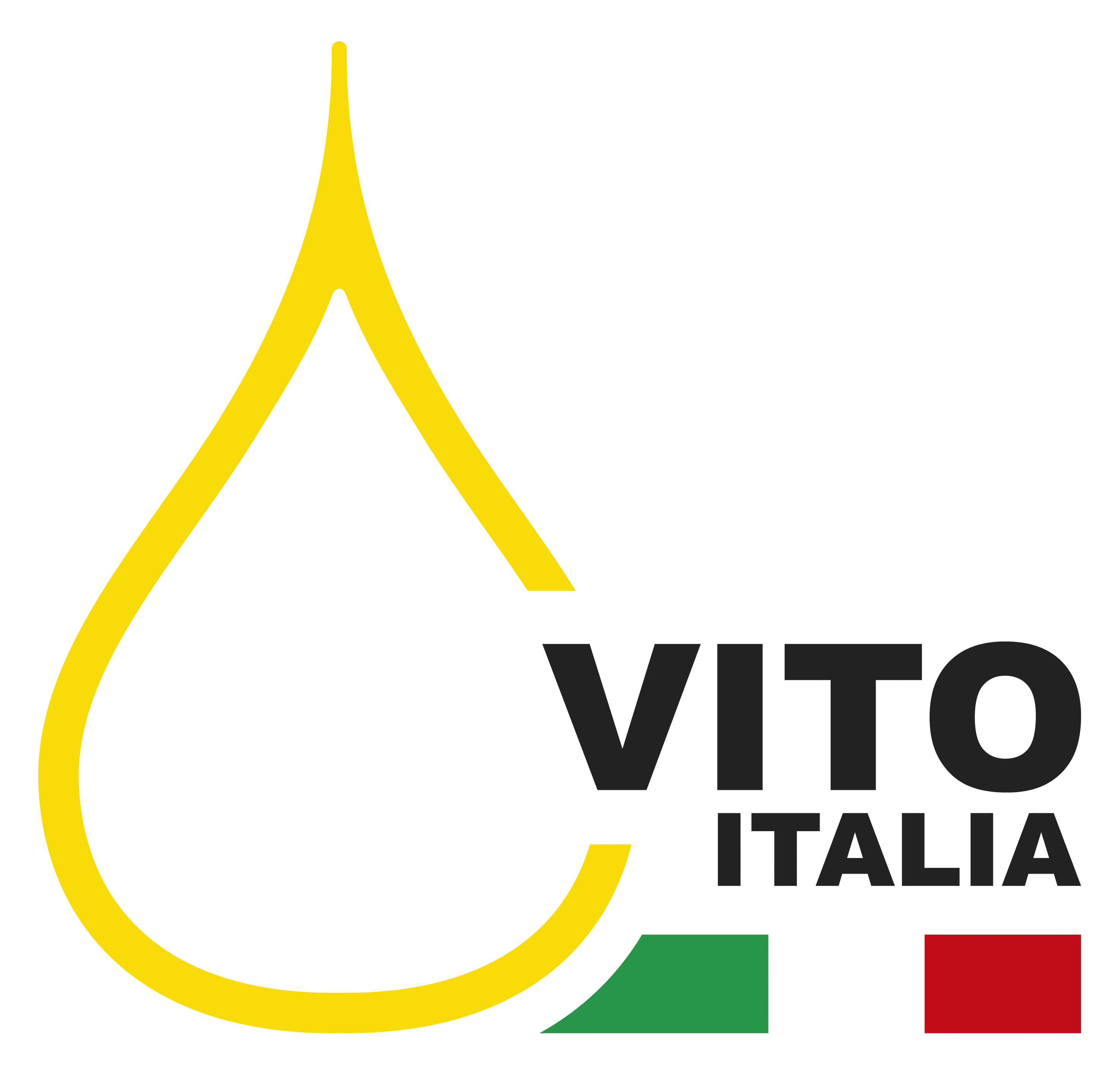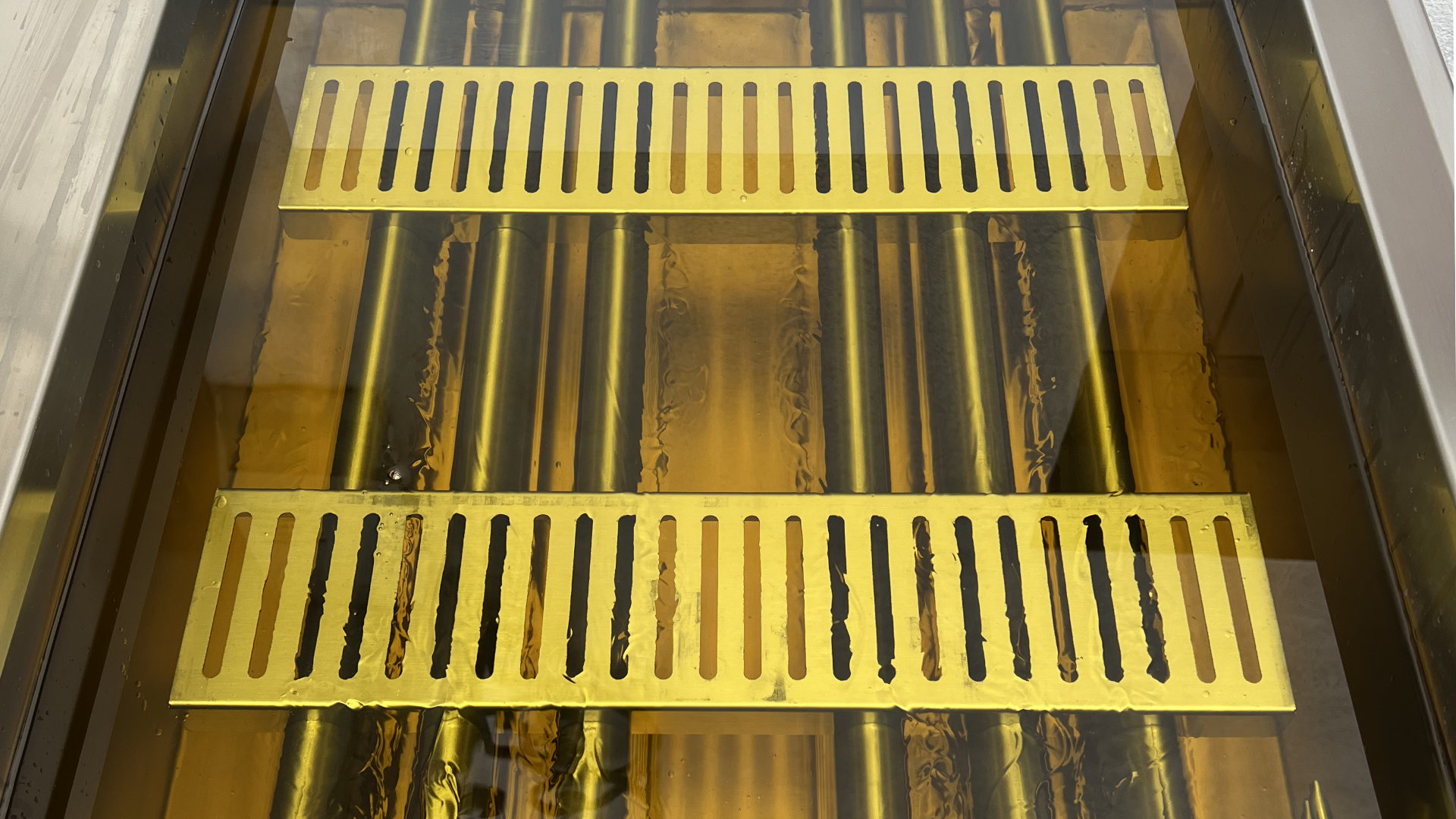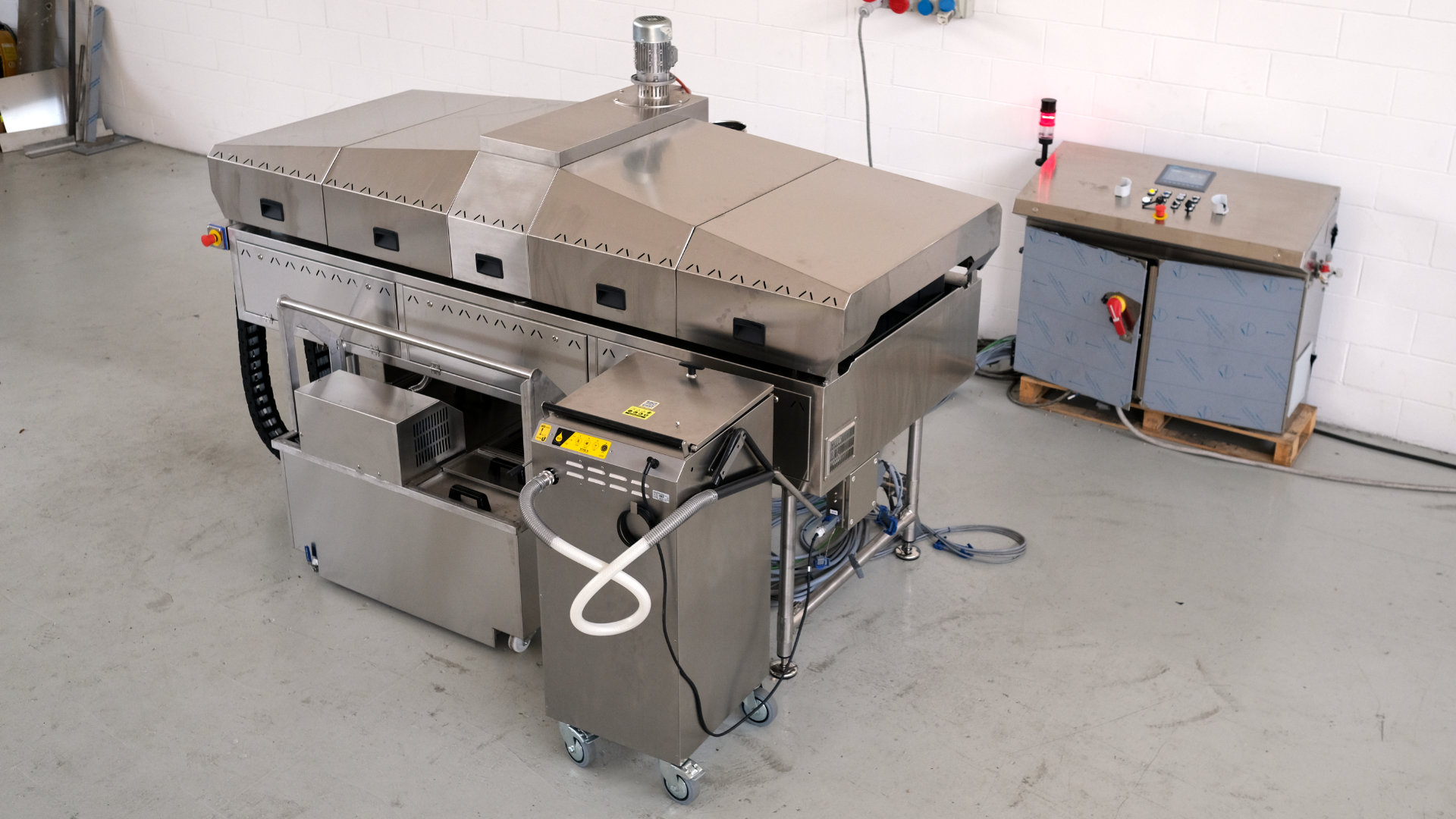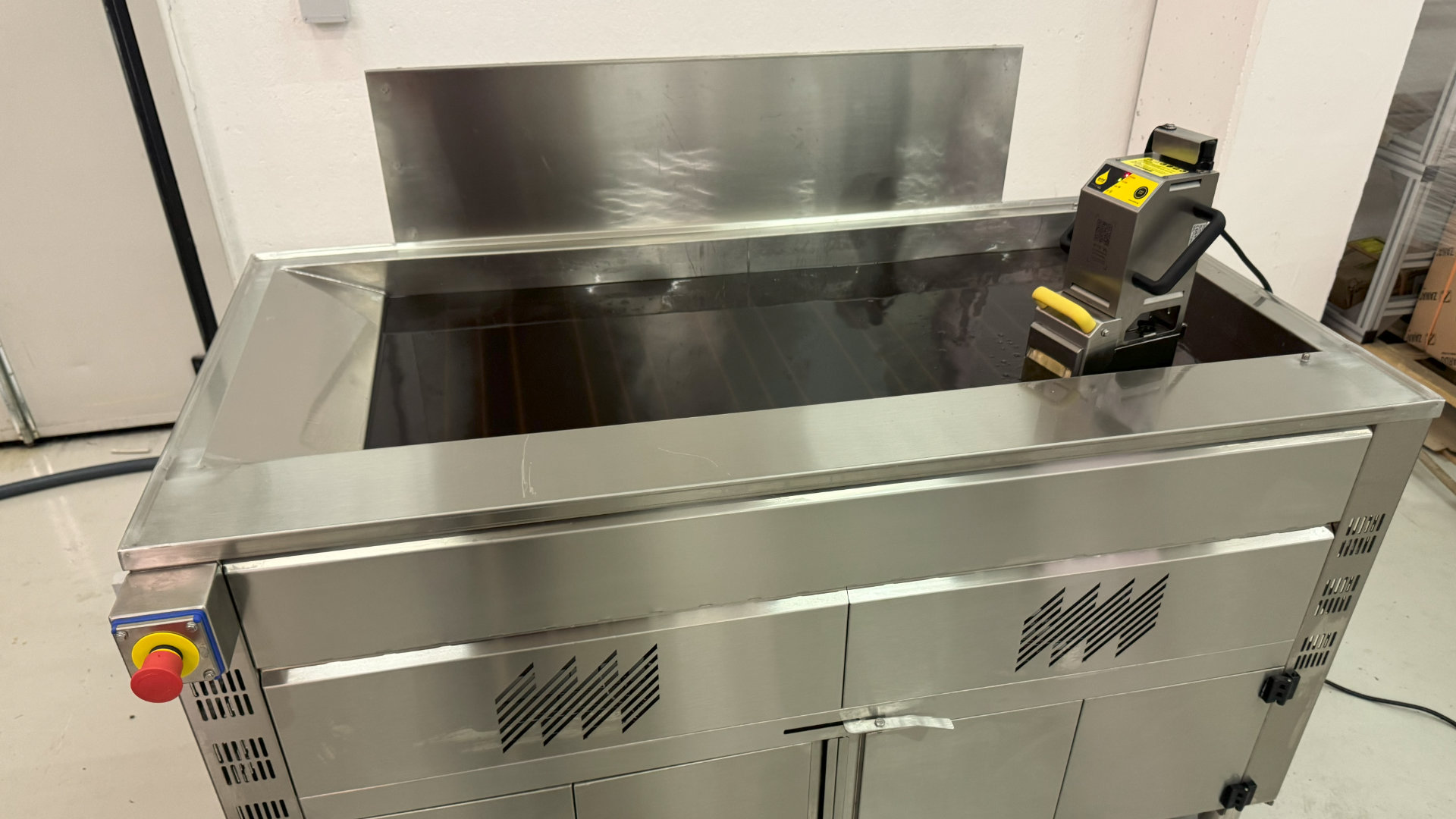This article was made possible thanks to information provided by Vito Italy, a company a leading manufacturer of filtration systems for frying oils. Their technology makes it possible to extend the life of oil, reduce waste and maintain high quality standards, with significant savings in operating costs.
We integrate Vito filtration systems into our plants., offering our customers effective solutions for optimal oil management. Filtering oil regularly means not only improving the quality of the final product, but also ensuring greater food safety and a more efficient frying process.
We thank Vito Italia for the valuable contribution and innovation it brings to the industry, helping companies optimize their operations without compromising on quality.

NOT ALL OILS ARE BORN FOR FRYING
How to choose the perfect oil for your frying while avoiding common mistakes?
Commentary:
"Frying is the food preparation process that puts the most strain on the stability of oil: when heated to high temperatures, it can undergo oxidation from which some harmful substances are formed. Too high a temperature or prolonged use of the same oil can make the effects of these reactions more pronounced."Dario Bressanini
Researcher at the Department of Science and High Technology, Insubria University.
Frying is not just an art, but a science. When oil is heated, it undergoes chemical transformations that alter its properties, affecting the flavor, quality, and safety of the food.
If you want to offer crispy fried foods, light and digestible, you need to make sure to:
The two basic criteria for choosing the right oil:
1) The smoke point: the limit not to be exceeded
The smoke point is the temperature above which the oil burns, producing smoke and harmful substances. An oil with a high smoke point is more stable and safer.
⚠ When an oil exceeds the smoke point, it releases hazardous compounds such as:
- Acrolein - Irritating to liver and stomach
- Acrylamide - Potentially carcinogenic substance
- Polycyclic aromatic hydrocarbons. - Respiratory irritants, endocrine disruptors, or elements of known carcinogenicity.
The smoke point of the main oils
| Palm | 210-230 °C |
|---|---|
| Extra virgin olive oil | 220 °C |
| Peanuts | 180-220 °C |
| Corn | 160 °C |
| Soybean | 130 °C |
| Sunflower seeds | 140-160 °C |
2) The composition of oil: the perfect mix of fats
The stability of an oil depends on its saturated, monounsaturated and polyunsaturated fat content:
- More monounsaturated = stronger and more stable oil
- Too many saturated = risk of toxic substances
- Too many polyunsaturates = Fragile oil, deteriorates faster
Percentage of fatty acids in vegetable oils
| Oils | Monounsaturated | Polysaturi | Saturate |
|---|---|---|---|
| Olive | 75% | 10% | 15% |
| Peanuts | 50% | 30% | 20% |
| Palm | 39% | 13% | 47% |
| Corn | 27% | 60% | 13% |
| Sunflower | 24% | 60% | 11% |
| Soybean | 22% | 63% | 15% |
So what is the best oil to use?
Frying is a beloved cooking technique all over the world, but to achieve a perfect and safe result, it is essential to choose the right oil and handle it correctly. Using an unsuitable oil or not substituting it at the right time can compromise not only the taste of the food, but also our health.
The best frying oil is one that simultaneously meets two requirements: a high smoke point and a good average between saturated and monounsaturated acids.
To recapitulate:
- Peanut oil: Has a high smoke point (about 230°C) and a neutral flavor, ideal for frying.
- High oleic sunflower oil: A variant with a higher smoke point than classic sunflower, suitable for frying.
- Olive oil: withstands high temperatures well (smoke point 210°C), but its flavor can alter that of foods.
- Palm oil: Stable at high temperatures, but to be chosen carefully for environmental impact.
Unless it is a considered choice by an experienced person, oils with a low smoke point, such as classic sunflower seed oil, butter, or flaxseed oil, would be best avoided.
Four elements that damage your oil
First
WaterCauses dangerous splashing and promotes oil degradation
According to
OxidationOil alters in contact with air and heat
Third
Dust and residueBreadcrumbs and burnt crumbs worsen the quality of fried food
Fourth
Exposure to lightExposes the oil to photo-oxidation processes, reducing its shelf life
Our tips for perfect fried food
Heat the oil and bring it to the optimum frying temperature (max 175° C). You can check the condition of the oil using digital testers such as the Vito FT440.
If possible, fry dry products making sure to shake off any ice or residue. Using a sieve drum or other technology can help you "prepare" the product before frying.
Combo and double drum flavorers are always installed after the fryer because food should never be salted or flavored before frying. This allows us to prevent the seasonings from charring, degrading the quality of the oil.
Check the correct oil level. Be sure to fry in "deep oil" in order to ensure your food is evenly cooked.
The heating systems in our fryers are designed to transmit a maximum of 2W/cm^2 of thermal power to the oil, and the tank is sized to have an adequate "reservoir" of oil so as to limit the phenomena that degrade the oil. By choosing automatic frying lines, the oil levels are managed directly by the software so you never get the quantities wrong.
All our belt fryers have an oil handling system to equalize the temperature inside the tank.
To improve the quality of your fried foods, try not to overload the belt frying line or the basket of the manual fryer.
Look at the license plate data of the car and, if possible, keep a ratio of 1:10.
In case you are using a basket fryer, remove the residue inside the tank regularly so as to avoid carbonification phenomena.
Semiautomatic and automatic fryers from veneto macchine eject the largest scraps thanks to the belts with which they are equipped. In addition, our fryers can be equipped with automatic scrap recovery systems in order to automate this task as much as possible.
The oil should be protected from light to prevent oxidation that produces a substance harmful to the liver and irritating to the gastric mucous membranes (Acrolein). If you are not frying, but the shift is not yet over, lower the oil temperature to 120 °C.
All Veneto Macchine fryers have covers and temperature management devices. Semi-automatic and automatic fryers work with the tank covers applied so as to avoid exposing the oil to direct light. Having the covers applied, fume extraction can be automatically managed in order to improve the propagation of odors and vapors as much as possible.
Filters after each service all kinds of contaminants such as: breading, batters, crumbs, condiments, etc.
These impurities foul the oil and lower its service life.
Vito devices are integrated into our systems, and management of the machine's filtering process is regulated by the PLC inside the automatic frying line.
Fill out the HACCP sheet daily to record filtrations, oil changes, oil temperature, and TPM values to ensure that you are always complying with legally mandated limits.
Automatic lines have numerous sensors and processes that are carried out autonomously. Should it be necessary almost all the required data can be provided automatically to the Client and can be saved in the server by the company directly from the machine.
Contact us





